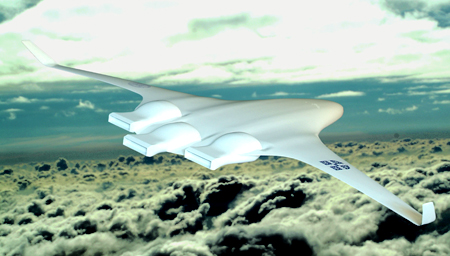INDIAN ARMED FORCES CHIEFS ON OUR RELENTLESS AND FOCUSED PUBLISHING EFFORTS

The insightful articles, inspiring narrations and analytical perspectives presented by the Editorial Team, establish an alluring connect with the reader. My compliments and best wishes to SP Guide Publications.

"Over the past 60 years, the growth of SP Guide Publications has mirrored the rising stature of Indian Navy. Its well-researched and informative magazines on Defence and Aerospace sector have served to shape an educated opinion of our military personnel, policy makers and the public alike. I wish SP's Publication team continued success, fair winds and following seas in all future endeavour!"

Since, its inception in 1964, SP Guide Publications has consistently demonstrated commitment to high-quality journalism in the aerospace and defence sectors, earning a well-deserved reputation as Asia's largest media house in this domain. I wish SP Guide Publications continued success in its pursuit of excellence.
- A leap in Indian aviation: Prime Minister Modi inaugurates Safran's Global MRO Hub in Hyderabad, Calls It a Milestone
- All about HAMMER Smart Precision Guided Weapon in India — “BEL-Safran Collaboration”
- India, Germany deepen defence ties as High Defence Committee charts ambitious plan
- True strategic autonomy will come only when our code is as indigenous as our hardware: Rajnath Singh
- EXCLUSIVE: Manish Kumar Jha speaks with Air Marshal Ashutosh Dixit, Chief of Integrated Defence Staff (CISC) at Headquarters, Integrated Defence Staff (IDS)
- Experts Speak: G20 Summit: A Sign of Global Fracture
Environment - Greening the Airways

Environmental responsibility needs to become a core business element of the aviation industry, rather than an add-on to impress politicians and appease the green brigade.
An early morning flight from Mumbai to Delhi—the sector which attracts the bulk of passenger traffic in the country—can be a memorable experience. Take off on schedule, friendly cabin crew, a comfortable flight. Then, just when it appears the destination is in sight, problems begin. The airliner enters an orbit and continues to circle for what seems like ages (delays of an hour are not unknown). Passengers get restive, anxiously enquiring if everything is all right. Regular feature, the cheerful air hostess assures them, We’ll soon be down. Finally, the plane comes in to land. The ordeal is not over, though. It could take another half hour or more to make the transit to the parking bay, accompanied by syrupy announcements of deep regret for any inconvenience caused. The ensuing litany of missed connections and rescheduled appointments can only be conjectured.
Irksome as such delays no doubt are, the waste of costly aviation fuel is appalling—even criminal. And what of the noxious greenhouse gas (GHG) emissions? Extra time in the air means more deadly GHG. Consider this. A Boeing 747 asked to orbit for a minute burns 250 litres of fuel and spews 750 kg of carbon dioxide (CO2). Not surprisingly, the aviation industry is gaining the dubious reputation of being one of the fastest growing contributors to climate change. No wonder a worried International Air Transport Association (IATA) is in the forefront of efforts to streamline air traffic the world over.
Airspace may seem vast and unlimited, but narrow airways are just as constricted as highways, and busy airports during peak hours are often the scene of controlled chaos. Weather, especially in winter, when most of north India is enveloped in a thick blanket of fog, undeniably plays spoilsport. But poor scheduling and outdated air traffic management (ATM) systems add to the congestion. If it is any consolation, India is not the only one affected—even the most advanced country in the world is hard hit. In 2007 alone, the US lost $40 billion (Rs 1,93,800 crore) on account of rescheduled flights—almost a third of all flights were either delayed or cancelled.
ATM holds the key
Airlines around the world, stung by mounting losses, have taken commendable steps to conserve fuel and cut costs. However, the single biggest advance in fuel conservation and emissions reduction could well be achieved by reforming the outdated ATM systems. Many are based on technology that is half-acentury old. Improvements over the years have been mostly ad hoc and incremental. The old adage applies: a chain is only as strong as its weakest link. It is still too much to hope that a given flight will have a reasonable assurance of taking off on time, proceeding to destination by the shortest route and being cleared to land without delay. More often than not, aircraft are stacked up or instructed to join fuel-guzzling holding patterns before being cleared to make their final approach.
Traffic in most parts of the world is organised on a national basis. Each time a plane enters the airspace of another country it is dealt with by a different air navigation service provider on the basis of different rules and operational requirements. This fragmentation affects safety, limits capacity, increases cost and boosts GHG emissions. However, most nations are perhaps understandably reluctant to cede control of their airspace to outside agencies.
Then again, vast stretches of airspace are restricted or prohibited to civil aircraft, mainly to permit safe and unhindered military training. There can be no quarrel with that. But what about a pre-Google Earth mindset which fears that security could be compromised by permitting civilian flights over any military facilities? Reopening military airspace to civilian use would greatly increase as the crow flies routes making for the most economical transits and drastically reducing overall aviation related GHG emissions. It is time that overly secretive attitudes were abandoned in the face of the far greater threat posed by global warming and climate change.





